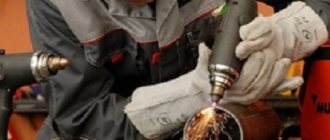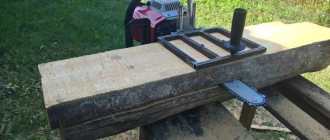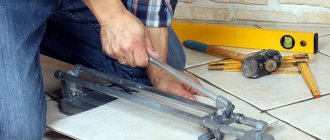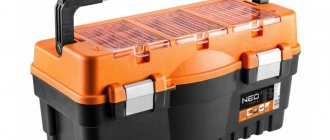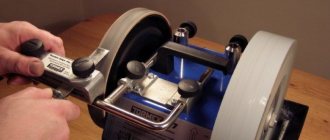Updated: 04/23/2021 12:51:21
Expert: Konstantin Borisovich Polyakov
When working with wood, many manual and electronic tools are used. Planers and jointers are among the most common among woodworkers. In order not to spoil the work, it is important to have a clear understanding of the specifics of each of them. How high-quality will the result of processing the product be and how are planers and jointers generally used? Our experts will tell you.
What is a jointer used for?
The design is always equipped with 2 knives. The presence of a pair of knives makes it possible to improve the quality of processing, not waste a lot of time, and prevent worker overwork.
Jointer knives have a greater sharpening angle compared to a plane. Gradual progress through the material guarantees an excellent result.
- The length of the frame is 3 times longer than that of a standard product. The cutting block of the jointer has a special chip breaker or chip breaker.
- In combination with an extended base, the level of final processing can be significantly improved.
- A handle is attached to the base of the jointer, which guarantees comfortable operation and equal pressure on the entire cutting surface of both knives.
For certain tasks, a shorter jointer is used. The dimensions of its frame do not exceed fifty centimeters. This unit is called a semi-jointer. Each of them is given his own license plate. It determines the scope of use and properties of the structure.
The most popular are semi-joints, numbers five and six. They are characterized by a difference in the width of the tip. It is 10 mm.
Thanks to its parameters and the improved design of its blade, it is easier to remove the top ball. They can easily process wood units that have an impressive area.
Semi-jointer number six has fairly compact dimensions. The duration of the frame is several times shorter compared to the classic model. Small dimensions made it possible to obtain equipment with a small mass.
Thanks to this, the worker does not overwork, and as a result, a high-quality product can be obtained. This point can be attributed to the first advantage of this structure. The second advantage is the provision of fairly uniform planing of the workpiece coating.
Which one is better to choose?
The answer to the question of how exactly a professional stationary jointer differs from manual tool models remains relevant. At the same time, potential buyers are interested in the performance indicators of these two categories of devices. But most often the questions concern which model to choose in a given situation.
The list of the most important includes some key selection criteria.
- The power of the jointer, which is the main characteristic of any power tool, directly affects its performance. As a rule, this parameter of household appliances varies in the range of 400-1000 W, and the power of stationary machines reaches 2200 W.
- The number of revolutions must be at least 10,000 per minute.
- The width of the workpiece processed in one pass.
- Planing depth.
- Equipment weight. In situations with manual models of electric jointers, this figure varies from 2 to 5 kg. Heavier specimens, as a rule, belong to the professional category.
It is the technical characteristics that determine the purpose of the tool. However, when choosing, it is recommended to take into account the ergonomics of the models in question. No less important will be the shape of the jointer body and the list of additional elements and functions.
What is the difference between a jointer and a plane
A specialist masters a small but integral plane in carpentry mainly only in the first stages of working with wood raw materials.
The main task of this stage of work is to make the material smooth, eliminating noticeable tubercles, knots and bulges from its surface. Then the worker, as a rule, takes another device.
- If we talk about the secondary processing of a fairly large product, then the jointer comes first, since the traditional option cannot properly level the coating over the entire area.
- The second one is laid like a “bridge” on part of the part, slowly eliminating minor defects from its surface. If you watch the specialist’s activities at this time, you will notice that at the start of work, small chips will fly out from under the structure, and then they will begin to come off in strips or elongated coils.
An additional function of the jointer is edge processing.
This structure will be an integral tool when gluing the edges of two surfaces, as it makes it possible to perform better processing.
Video description
Thicknesser or jointer: What is the difference, what are the advantages using an example.
As a rule, the knife has a slot in the middle, so it is applied to the inclined end of the block and pressed through the slot with plywood, screwing in the screws. When you place the clamped knife on the table, the trigger should be pressed tightly against its plane. Now you need to place glass at least 4 mm thick on the table and stick a strip of sandpaper on it along the edge. The rest is a matter of technique: the edge of the block will slide along the glass, and the descent of the knife will slide along the sandpaper. To be able to change the grain of the paper, it is not glued, but stapled to the table at the edges of the glass. In this way, you can achieve perfect sharpening of the blade if you move from a coarser grain to a finer one.
Manual jointer
Craftsmen who process a large amount of wood every day prefer to use electric jointers Source recn.ru/kak-vybrat-fuganok This
is the 21st century and now everything is being improved, modernized, robotized, although sometimes it is precisely these actions that spoil everything. But this is not the case with a jointer - the electric drive for such a tool has served well for all carpenters who have to process large amounts of wood. Whatever you say, power tools require much less physical effort compared to manual mechanical devices. Even old-timers of mechanical carpentry agree that working with a power jointer has made woodworkers' lives much easier, while also greatly increasing productivity.
Today, there are many manufacturers engaged in the development and production of such power tools. Here are some of them:
- Flinke RE-1650, Poland.
- Grand RE-1700, Czech Republic.
- ELU, Germany.
- Makita KP0800, UK.
- Bosch PHO 1500, China.
Types of jointers
Available options include:
- Manual (mechanical) - can be plastic, metal, wood or a combination - are almost identical in functionality, however, the technical properties directly depend on the material used to manufacture the construction equipment frame;
- Electric – thanks to the additional equipment of an electric motor, they make it possible to carry out large volumes of work at fast processing rates.
Wood structures are in great demand when processing wood in everyday life.
Comparative characteristics
- Since a jointer is a type of planer, there are not many differences between them. Both products are used to remove “excess” material from workpieces in order to obtain a perfectly flat surface. The main difference is the degree of processing of the product
.
- The plane is used as a tool for primary processing
. The thickness of the removed wood layer is usually set when setting up the equipment. Wood planing is primarily intended to eliminate knots, bumps and other irregularities. The design itself is always simple: 2 elements - a block and a knife.
- The jointer usually has a longer body
, providing very tight pressing of the product to the wood being processed. Most often, the jointer is equipped with two blades, allowing for finishing.
Hand plane device
Since its inception, the design of the plane has remained almost the same. Only the material used to produce the basic components has improved. Initially, the frame and other components were exclusively wooden.
Currently, many types of metal and plastic are often used for this.
Despite this, the main components of the plane are:
- Block. Load-bearing part of the structure. The basic components of the product are fixed on its surface;
- Front and rear handle. Designed to properly hold equipment in the hands of the consumer;
- Sole. The lower flat component of the block. Allows the product to slide over the coating of the workpiece;
- Slot. Necessary for mounting the knife edge and removing chips;
- Knife. Working component of the product. Thanks to it, the outer layer of material is removed. They make exclusively metal;
- Fasteners and bolt. They serve as a tip retainer, a coordinating part for waste disposal and a knife for crushing chips. In certain variants, the wedge method of fastening the sharpening is used.
Mechanism of operation
The mechanism of operation of the product consists of removing the outer ball of the tree using a device, a tip, securely fixed in the frame.
Before the planing process, it is necessary to carry out preparation work by performing the following manipulations:
- Align and secure the clamp and cutter of the structure with the fastening bolt.
- Place the cutter of the product in the working position, moving it from the slot to the desired interval. Do not forget that the edge of the cutter should be close to the sole.
- After mounting the cutter to a suitable offset, it is necessary to secure it using a clamping plate or a wooden blade.
- Carry out a test run of the unit on coating the workpiece. If necessary, make additional adjustments to the tip.
Operating rules
To perform work with a manual jointer, you will need appropriate knowledge and practical skills. First of all, it is worth focusing on the preparatory stage, which includes a number of manipulations.
- Setting up the tool with setting the required planing depth and working width. Household electric jointers allow you to process surfaces with a width of 50 to 110 mm. It is important to consider that this parameter is determined by the power of the equipment. The immersion depth of the knives depends on the characteristics of the wood being processed.
- Checking the number of revolutions of the power unit. By the way, there is a misconception that the performance of a tool is directly proportional to its speed. However, in practice, as the speed increases, the torque and force decrease, which negatively affects the quality of processing of hardwood.
- Determination of feed rate. During the operation of jointers, this parameter can be up to 30 mm/sec with a planing depth of up to 1.5 mm. If the latter is higher than the specified value, then the practical feed varies within 10-20 mm/sec.
In addition to all of the above, at the preparatory stage you will need to secure the workpiece as securely as possible on the workbench. Experienced craftsmen advise starting processing from the ends and with a minimum insertion depth of the knives. Feed and depth increases if there are no defects on the surface after the first pass. Changing them is allowed only after the instrument is turned off and the drum has completely stopped. It is also a prerequisite to inspect the surface being treated in order to detect the possible presence of nails and other foreign objects.
To ensure maximum straightness of the jointer movement, it is recommended to make markings using colored crayons or a construction pencil. This also determines the uniformity of planing. In places with preserved marking lines, the processing depth will be less.
When operating stationary jointing machines, the workpiece being processed is fed to the shaft with knives manually or automatically using an appropriate device. The hardware memory unit stores a fairly rich arsenal of special software. It adjusts the parameters based on the characteristics of the wood. By the way, professional models are capable of processing several planes simultaneously.
Before setting up a stationary jointer, you need to lower all parts of its working surface. After this, the required number of blades is installed on the shaft, maintaining parallelism. At the final stage, it is necessary to set the working surfaces and guides, then check the machine at idle speed.
To learn how to make a jointing machine from an Interskol 110 electric planer, see the following video.
